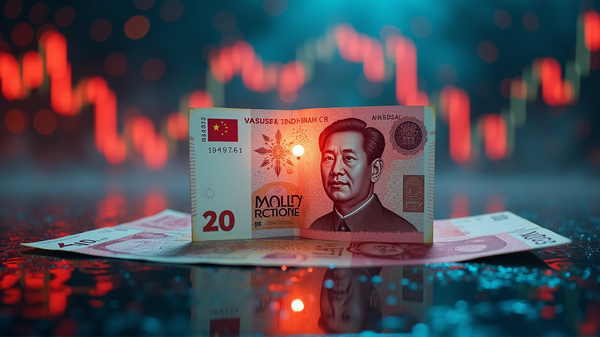The Rising Concern: USDT's Increasing Use in Money Laundering Operations Across Southeast Asia
In an age where digital currencies are gaining prominence, a startling trend is emerging in Southeast Asia. According to a report cited by the Financial Times and released by the United Nations Office on Drugs and Crime (UNODC), there has been a significant increase in the use of Tether (USDT) for money laundering activities in the region. This development highlights a worrying intersection between cryptocurrency and organized crime, posing new challenges for law enforcement and regulatory authorities.
The Emergence of a Parallel Banking System
Organized crime groups in Southeast Asia have been quick to adapt to the evolving financial landscape. By leveraging the anonymity and ease of transfer provided by cryptocurrencies like USDT, these groups have effectively created a parallel banking system. This system operates outside the traditional financial regulatory framework, making it extremely difficult for authorities to track and control.
USDT, a stablecoin pegged to the US dollar, has become a preferred tool for these illicit activities. Its stability compared to other cryptocurrencies makes it an ideal medium for criminals looking to launder large sums of money without the risk of market volatility.
Online Casinos and Crypto: A Dangerous Synergy
The UNODC report also sheds light on the role of online casinos in this burgeoning criminal ecosystem. Southeast Asia has seen a surge in the number of online gambling platforms, many of which operate with little to no regulation. These platforms often accept or deal exclusively in cryptocurrencies, further complicating the task of monitoring and regulating these financial flows.
The convergence of unregulated online casinos and the availability of cryptocurrencies like USDT has created a potent mix that facilitates money laundering. Criminals can easily deposit illicit funds into these casinos, gamble with a portion of the money, and then withdraw their 'winnings' as ostensibly legitimate earnings. This process, known as 'layering,' makes it incredibly challenging to distinguish between legal and illegal funds.
Implications and Challenges for Law Enforcement
The increasing use of USDT in money laundering presents several challenges for law enforcement agencies. Traditional methods of tracking financial transactions are often ineffective when it comes to cryptocurrencies. The pseudonymous nature of these digital currencies means that while the transaction data is public, linking them to real-world identities is not always possible.
Furthermore, the decentralized nature of cryptocurrencies means that they are not bound by national borders. This global reach allows criminals to easily move funds across countries, complicating the jurisdiction and cooperation between different countries' law enforcement agencies.
The Regulatory Response
In response to these challenges, governments and international bodies are beginning to take action. Efforts are being made to bring cryptocurrency transactions under the purview of existing financial regulations. This includes implementing Know Your Customer (KYC) and Anti-Money Laundering (AML) standards for crypto exchanges and wallets, similar to those required for traditional banks.
However,
the effectiveness of these regulations is still a subject of debate. Critics argue that the decentralized and global nature of cryptocurrencies makes enforcement difficult. Moreover, the rapid evolution of technology often outpaces regulatory measures, allowing criminals to find new loopholes to exploit.
Regional Cooperation and Global Initiatives
Addressing the challenge of money laundering in Southeast Asia requires a coordinated regional response. Countries in the region are beginning to recognize the importance of cooperation in tackling cross-border financial crimes. Initiatives such as information sharing agreements, joint task forces, and harmonized regulatory frameworks are being considered and implemented to combat the misuse of cryptocurrencies.
On a global scale, organizations like the Financial Action Task Force (FATF) are playing a crucial role in setting international standards and guidelines for combating money laundering and terrorist financing. The FATF has been particularly vocal about the risks associated with virtual assets and has called for stricter regulation of the cryptocurrency sector.
The Future of Cryptocurrency Regulation
As the cryptocurrency market continues to mature, it's likely that we will see more robust regulatory frameworks emerge. These regulations will aim to strike a balance between fostering innovation in the fintech sector and mitigating the risks associated with digital currencies. The challenge will be to create a regulatory environment that is flexible enough to adapt to the rapidly evolving nature of technology while being stringent enough to deter and punish illicit activities.
Public Awareness and Education
An often-overlooked aspect of combating financial crimes is public awareness and education. Educating the public about the risks associated with cryptocurrencies and the signs of money laundering can play a significant role in prevention. Awareness campaigns, educational programs, and community engagement initiatives can empower individuals to identify and report suspicious activities.
Conclusion
The increasing use of USDT for money laundering in Southeast Asia is a complex issue that intersects with technology, finance, and law enforcement. As criminals continue to exploit the anonymity and ease of transfer offered by cryptocurrencies, it becomes imperative for regional and global actors to collaborate effectively. Through a combination of regulatory measures, law enforcement cooperation, and public education, there is hope for curbing the misuse of digital currencies and protecting the integrity of the global financial system.
In conclusion, the rise of USDT in money laundering activities is a clear indicator of the broader challenges posed by cryptocurrencies. As the world grapples with these issues, the developments in Southeast Asia will be a crucial case study in understanding and responding to the evolving landscape of financial crime in the digital age.




